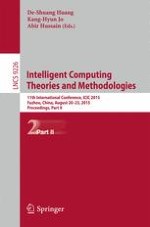2015 | OriginalPaper | Buchkapitel
Predicting Protein-Protein Interactions from Amino Acid Sequences Using SaE-ELM Combined with Continuous Wavelet Descriptor and PseAA Composition
verfasst von : Yu-An Huang, Zhu-Hong You, Jianqiang Li, Leon Wong, Shubin Cai
Erschienen in: Intelligent Computing Theories and Methodologies
Aktivieren Sie unsere intelligente Suche, um passende Fachinhalte oder Patente zu finden.
Wählen Sie Textabschnitte aus um mit Künstlicher Intelligenz passenden Patente zu finden. powered by
Markieren Sie Textabschnitte, um KI-gestützt weitere passende Inhalte zu finden. powered by
